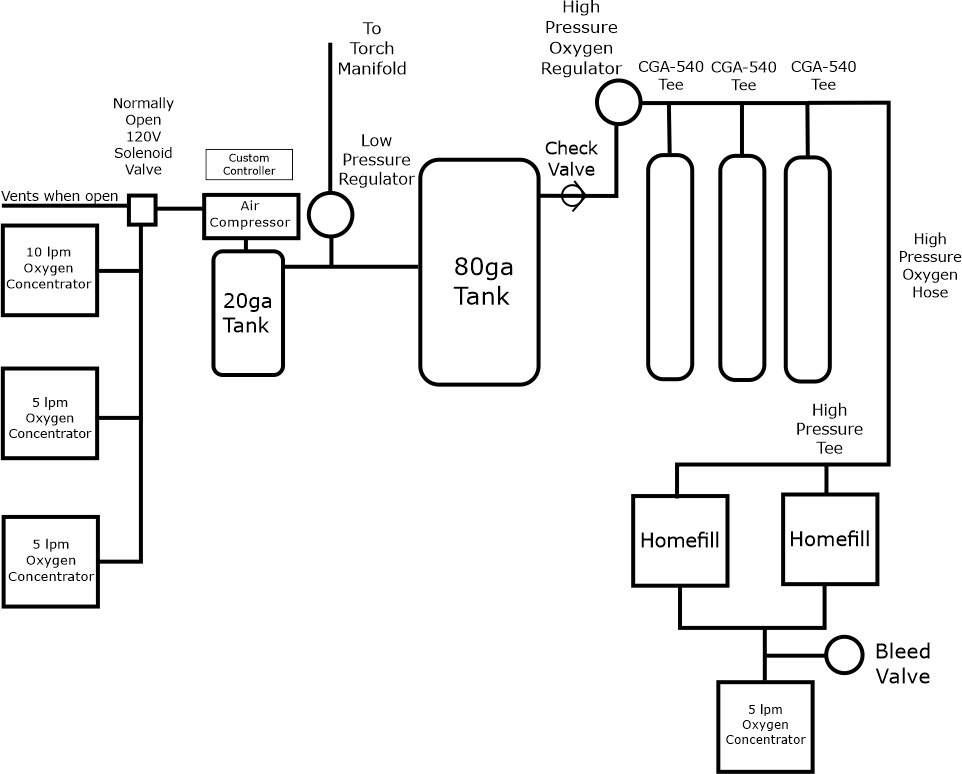I've read lots of questions from glassworkers who are interested in oxygen systems. While I'm not an expert, I have learned a few things and built a functioning system, so I decided to take a few minutes and write a beginner guide to oxygen systems for glasswork. If anyone finds errors or stuff that is poorly or incompletely explained, please let me know.
One question that comes up a lot is, make or buy? I'm an engineer with a machine shop and over 60 years experience making stuff. Things that are easy for me may be very challenging or even impossible for people with less experience and fewer tools. First prototypes are always a bit challenging, even for me. Things never seem to go as smoothly as you expect when starting a project. Excellent systems are available from Oxygen Frog and High Volume Oxygen. While they are expensive, they are well made, tested and supported and can immediately be put to work. The DIY option will be less expensive if you have the tools and skills and consider your time to be free.
Oxygen concentrators work by removing nitrogen from air using zeolite and pressure. Zeolites are a class of materials with a lot of surface area per volume. They are used in many chemical processes. When zeolite is exposed to compressed air, the nitrogen adsorbs onto the surface, leaving the oxygen behind. When pressure is released, the nitrogen is released. By carefully controlling time and pressure, a system can be made with two zeolite tanks, one trapping nitrogen and producing oxygen, the other releasing nitrogen. The timing, pressure and many other little details are important, and tuning them is tricky. I attempted to make a DIY oxycon from plans I found on the oxikit.com website and only achieved partial success while getting a lesson in how difficult it is to tune these things. Commercial oxycons have been engineered and tuned and work well.
I have read many posts from glassworkers who want to use the output of an oxycon directly into a torch. While some have success with this method, it is sub-optimal. Oxycons have an optimal pressure and flow and work best at constant flow. Torches are frequently adjusted. Oxycons typically operate at low pressure. Many torches require higher pressure. Some oxycons have adjustable pressure regulators and some suppliers and users bump up the pressure. The general consensus of the community seems to be that this is a bad idea. Oxycon engineers have designed and tuned the machines for a specific pressure and flow and messing with that tuning seems dicey.
A good solution for glassworking is to use a compressor and storage tank. The compressor must be oil-free and pressures are limited. Some compressors only produce 100-120PSI, others go up to 175. The advantage of a system like this is that it averages out supply and consumption. If you are using less than the oxycons produce, oxygen is stored. If you are using more than the oxycons produce, oxygen is released from the tank. A common question I read is "how many oxycons do I need to run my torch?". This is tricky to answer. It depends on how you use your torch. If you mostly use a small flame and only occasionally use a large flame, you need less than the published maximum flow for the torch. Unfortunately, there is no easy way to accurately determine your average use.
Low pressure tanks have limited capacity. A typical 80ga tank at 175PSI holds roughly 3600L of oxygen, about a half of a K tank. If you need more oxygen, there are two options, add more oxycons or use higher pressure. Designing a system is all about tradeoffs, time vs money is an important one. If you work long hours with large flames, you have little choice, you simply need more oxycons. But, if you only occasionally do glasswork, you can trade time for money and pump up storage tanks to higher pressure when not doing glasswork.
Compressing oxygen to high pressure is inherently difficult. Single stage compressors are limited to 175 PSI or so, to get higher pressure, the compressor must have multiple stages. Hardcore industrial compressors can have 10 stages and giant motors. The most common high pressure compressor used by glassworkers is the Homefill. It's a 5 stage compressor that compresses about 2.5 LPM. They are relatively inexpensive, especially if purchased used. Unfortunately, they have a limited life and many used ones are worn out. Fortunately, the major wear parts are the high pressure seals, and these are fairly easy to replace. I made a video on this. Homefill Seal Replacement
Since they only compress 2.5LPM, they are slow. A Homefill can pump a K tank to 1000PSI in about 24 hours. They are rated to compress to 2000PSI, but the consensus of opinion seems to be that limiting pressure to 1000PSI prolongs life. If you only do glasswork occasionally, a Homefill can be a good choice. It's also possible to use two Homefills in parallel. Since they use 2.5LPM, a 5LPM oxycon can provide enough capacity for two. Also, K tanks can be plumbed in parallel. I use three, pumped to 1000PSI. Remember that all fittings and hoses used for high pressure oxygen must be rated for high pressure oxygen service and installed correctly. High pressure can be VERY dangerous and it's necessary to have the skill and knowledge to do it safely.
The hose used to connect a Homefill to a tank is sometimes called a "whip". I have no idea where the name came from, it's not common in industry. The hose must be rated for high pressure oxygen service. The fitting on the tank is called a CGA-540, and is an industrial standard. The Homefill requires a special fitting and contains a check valve. Once again, remember that all fittings used must be rated for high pressure oxygen service.
A Homefill has an oxygen purity sensor and requires pure oxygen to be present before the pump is activated. Even when pure oxygen is present, it takes a few minutes for the Homefill to start pumping. Oxycons require flow to work, and will not produce oxygen if directly connected to a Homefill that isn't pumping. Oxycons don't produce pure oxygen when first started, it takes a few minutes of flow before acceptable levels of purity are produced. There are two ways to deal with this.
Some oxycons have both a front and back output fitting. The Homefill is connected to the back fitting and the front fitting is left open. The front flow control is adjusted to about 2LPM, so the oxycon can come up to purity before the Homefill starts pumping. I've read that this can be useful for medical users who can use the front output while the back output is pumping their tank. For glassworkers, the oxygen coming out of the front output is wasted. For oxycons with only one output, a vent valve must be used. It is connected to a T fitting between the oxycon and Homefill and is opened to allow the oxycon to start up. Once the homefill detects oxygen and starts pumping, the vent is closed.
It's also possible to make a hybrid system, using both high and low pressure tanks. This is the approach I used. My system has a 175PSI compressor with a 20ga tank, an 80ga tank, two Homefills and three K tanks. The homefills are fed from one 5LPM oxycon and the low pressure compressor is fed by a 10LPM and two 5LPM oxycons, for a total of 20LPM. I can run a delta mag or 65mm herbie with this system if I limit my glassworking time. The K tanks are connected together and to the Homefills with high pressure, oxygen-rated fittings and hoses. The output of the K tanks goes to a regulator, through a check valve and into the low pressure tanks. I set the regulator on the K tanks to approx 60PSI and the regulator on the low pressure tank that feeds the torch at 50PSI.
A low pressure oxygen system must be controlled. This control can be done manually, mechanically or with an electronic controller. The control is not difficult and there are several approaches. An oxycon does not produce pure oxygen when started and doesn't like working with its output blocked. A low pressure system must provide a way to vent the oxycon output during startup and start the compressor when purity is achieved. When the compressor reaches target pressure, it must shut off and either shut off the oxycon or open a vent.
One way to do this is with a 5PSI relief valve installed in a T fitting between the oxycon output and compressor input. With the compressor turned off, the oxycons are started. Flow is vented through the relief valve. After the oxycons have started producing good oxygen, the compressor is manually started. If the system is properly balanced, the pressure in the line drops below 5PSI as the compressor runs and nothing escapes through the relief valve. Once the compressor reaches pressure, its control turns the motor off and the oxycons continue running and venting through the relief valve. This approach works but I've read that it's somewhat challenging to find 5PSI relief valves. In my system, I use a 120V normally open solenoid valve electrically connected in parallel with the compressor motor. When the motor of off, the valve is open and the oxycon output is vented. When the compressor is running, the valve is closed.
Startup timing can be done manually or automatically. Since I'm a control systems engineer, I was able to whip up a controller, but manual control is not difficult. One of the advantages of commercial systems is the electronic controller that manages the oxycons and compressor. Some systems also report oxygen purity.
A question that often comes up is balancing the oxycon output and compressor input. Since oxygen is a compressible gas, this is easy. Balance happens automatically and naturally. If the compressor has a higher input flow capacity than the oxycons can produce, it will cause a partial vacuum in the line. This is not a problem. The compressor takes what it gets from the oxycons and simply operates a bit less efficiently. Of course, if the compressor is creating a partial vacuum, the flow regulators on the oxycons must be adjusted appropriately, since flow will naturally increase a bit when going into a lower pressure line.
If the oxycons are producing more flow than the compressor can accept, you need a bigger compressor. Using too small of a compressor won't damage anything, but you will be wasting oxycon capacity.
Here are some performance numbers. The low pressure system takes 3.5 hours to pump from zero to 160 PSI while consuming 2kW. The high pressure system draws 800 Watts and takes 17 hours to pump the three K tanks from 600 to 1000 PSI
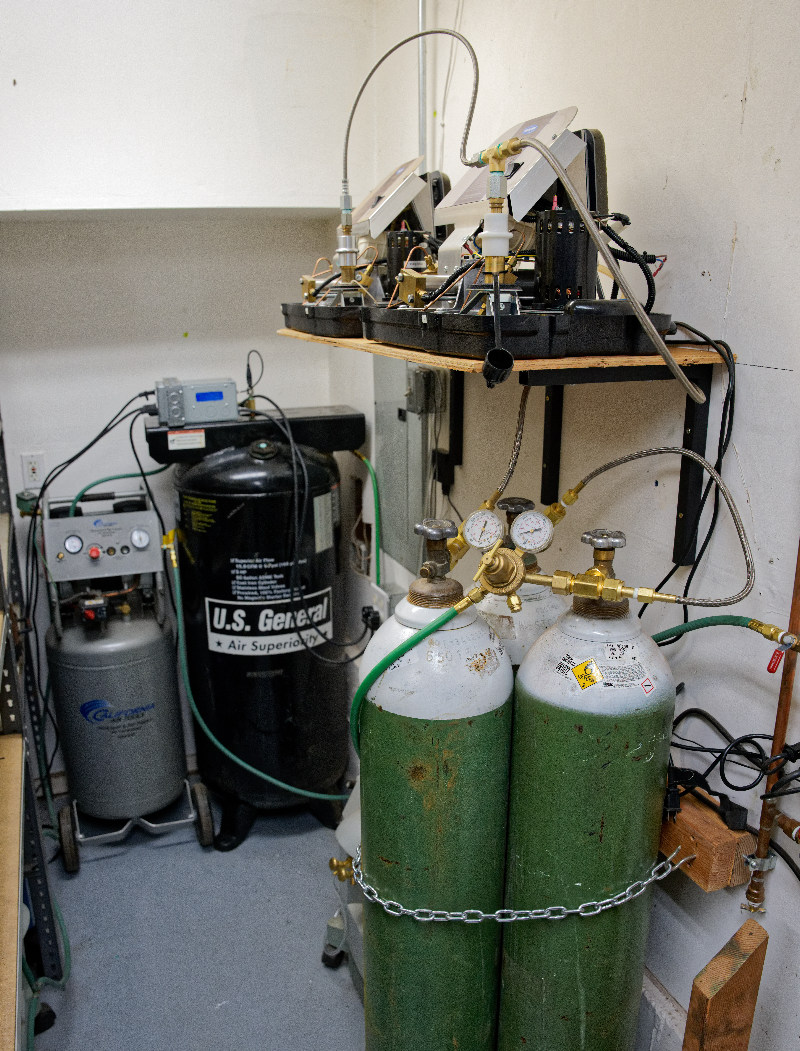
Overview
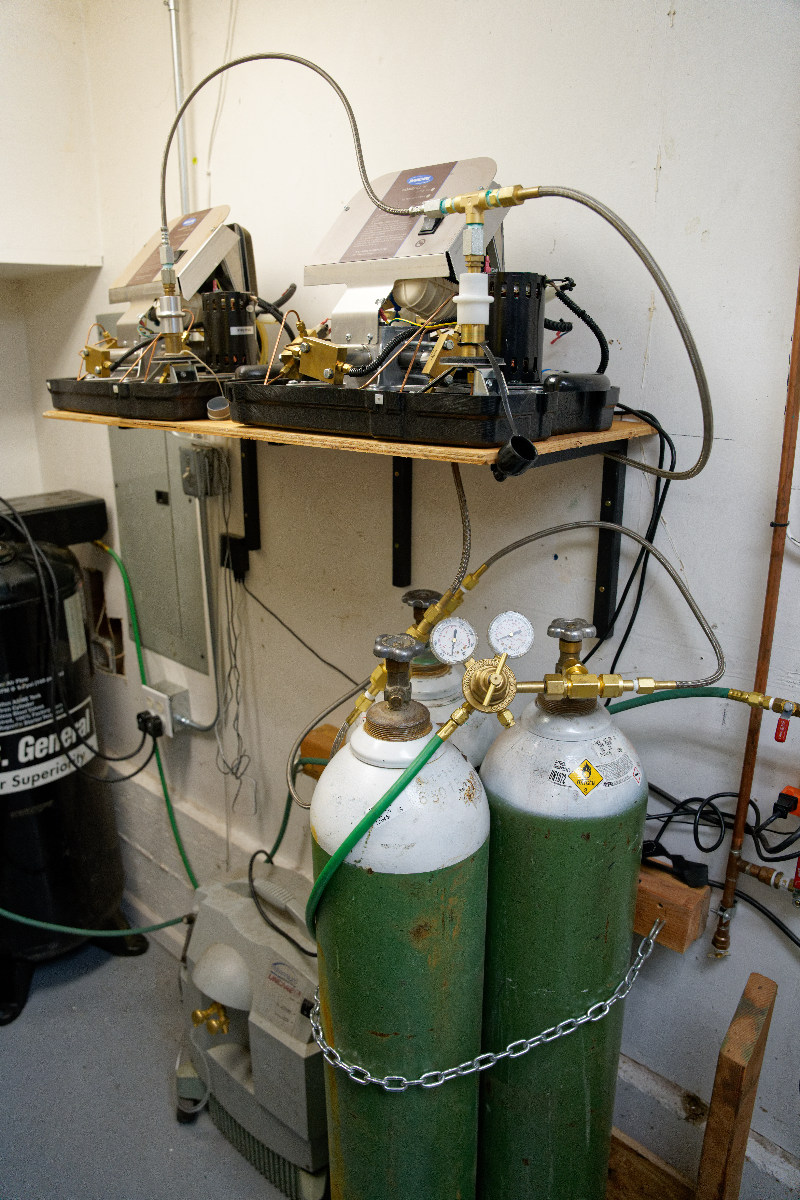
Homefills
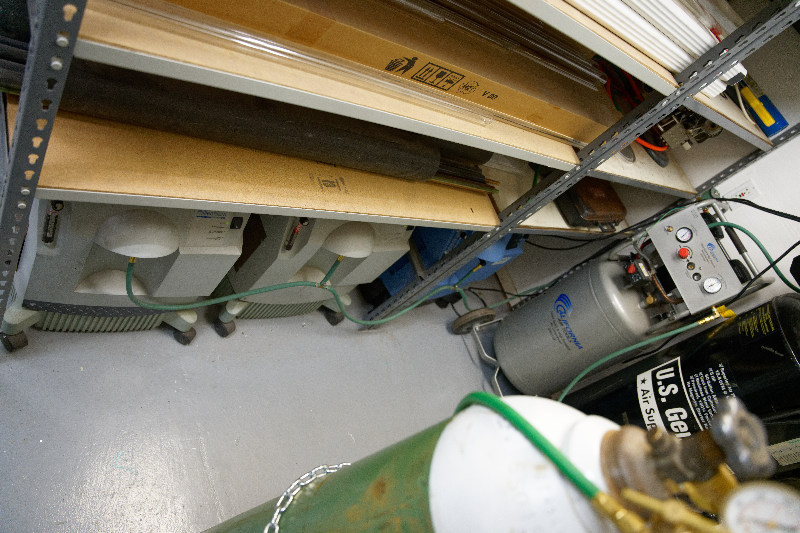
It's a small area, and it's hard to get good shots
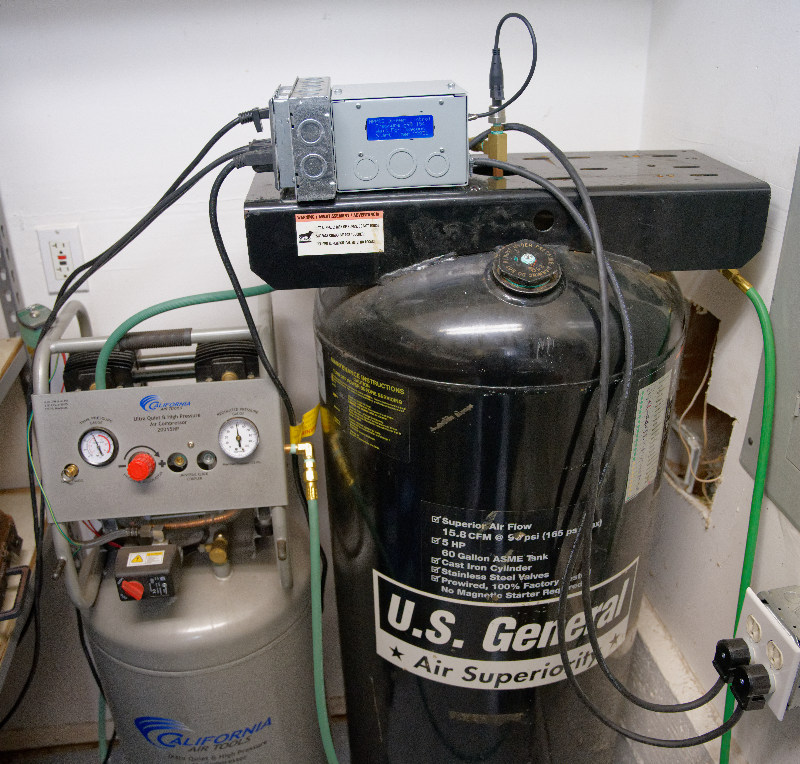
The controller
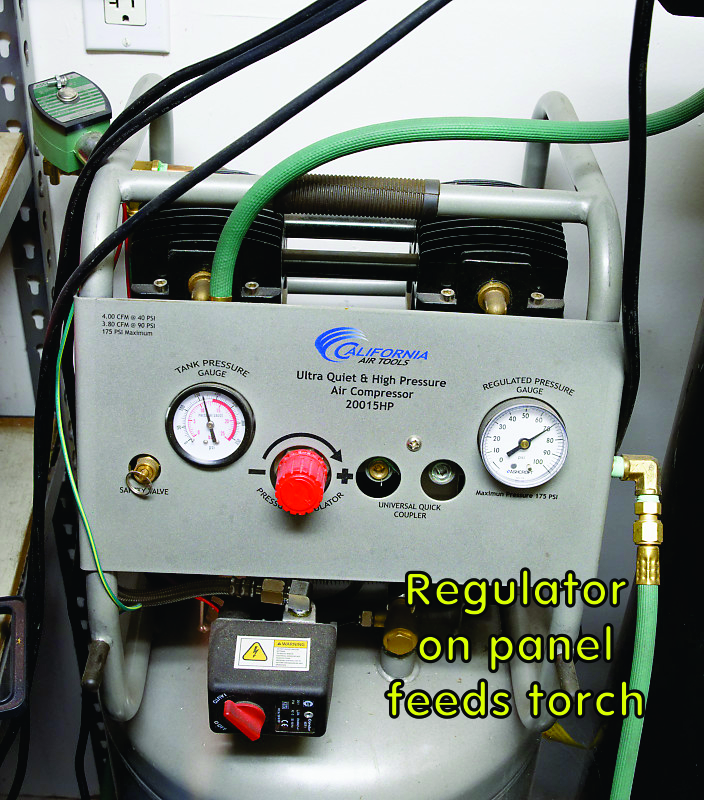
Regulator on panel feeds torch manifold
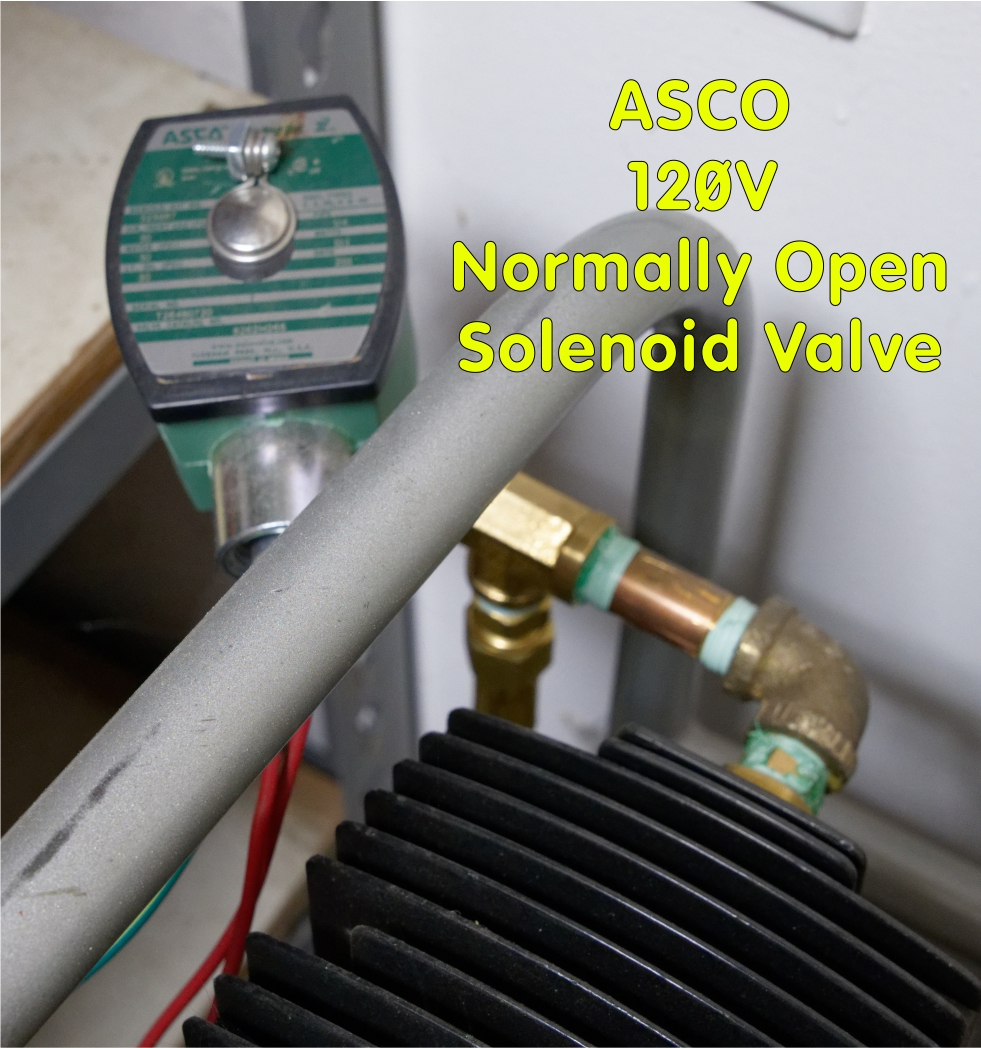
Normally open valve wired in parallel with compressor motor. When motor is off, valve vents to atmosphere. When compressor is running, valve is closed
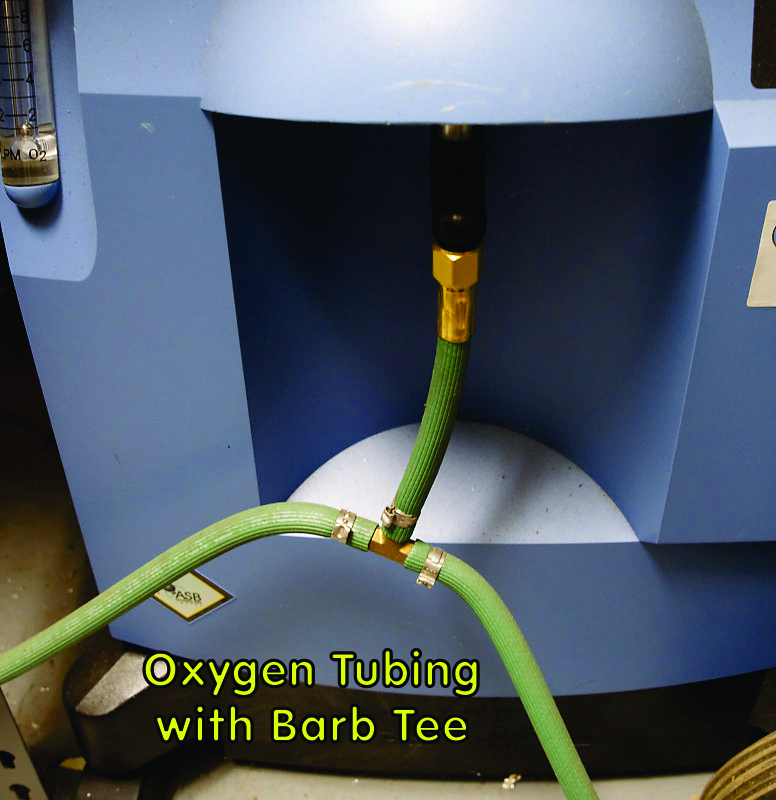
Brass barb tee with hose clamps and green oxygen tubing
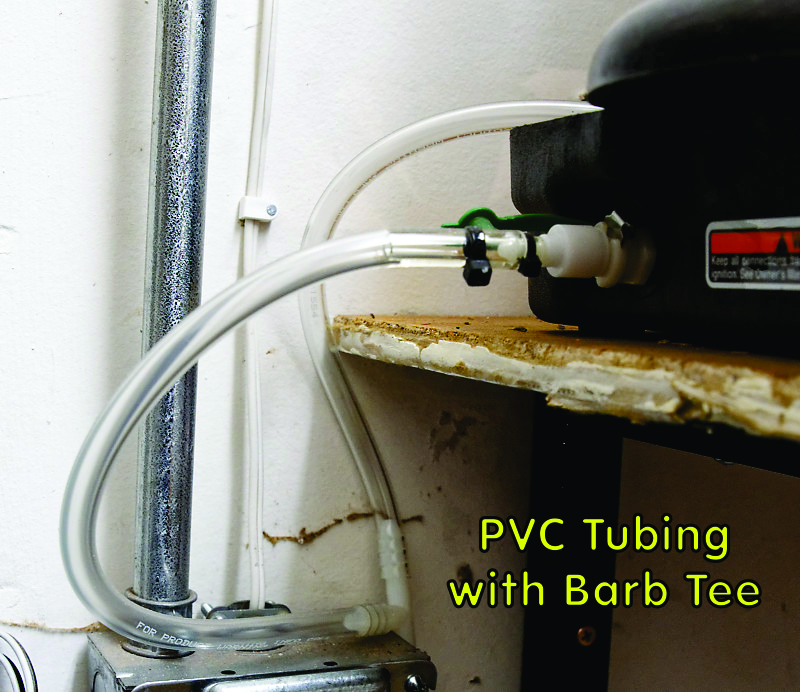
Simple plastic hose connects homefill inputs
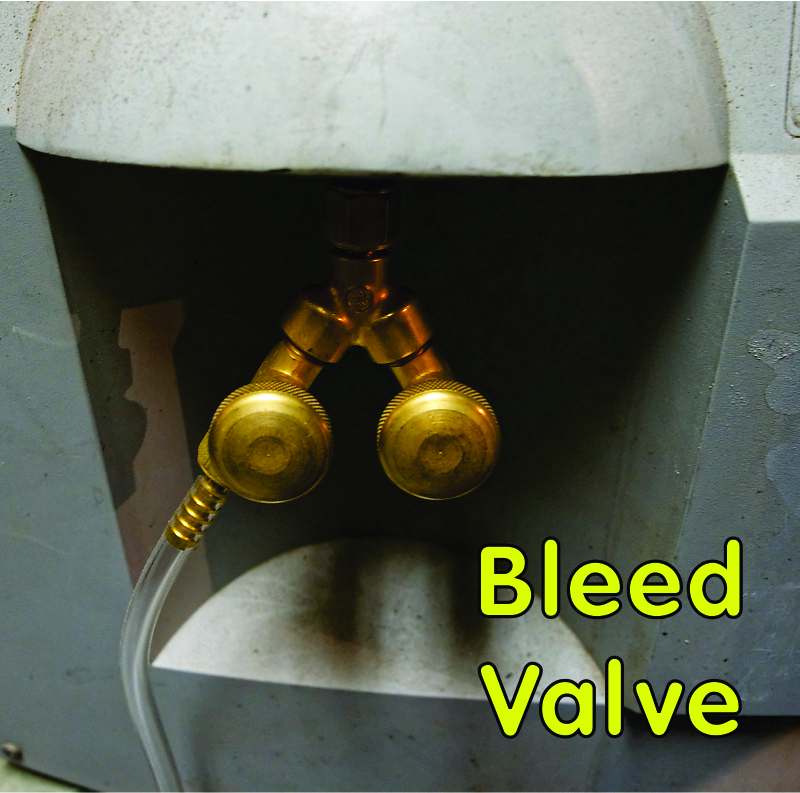
Left valve to homefills always open. Right valve vent to atmosphere open during oxycon startup, then closed
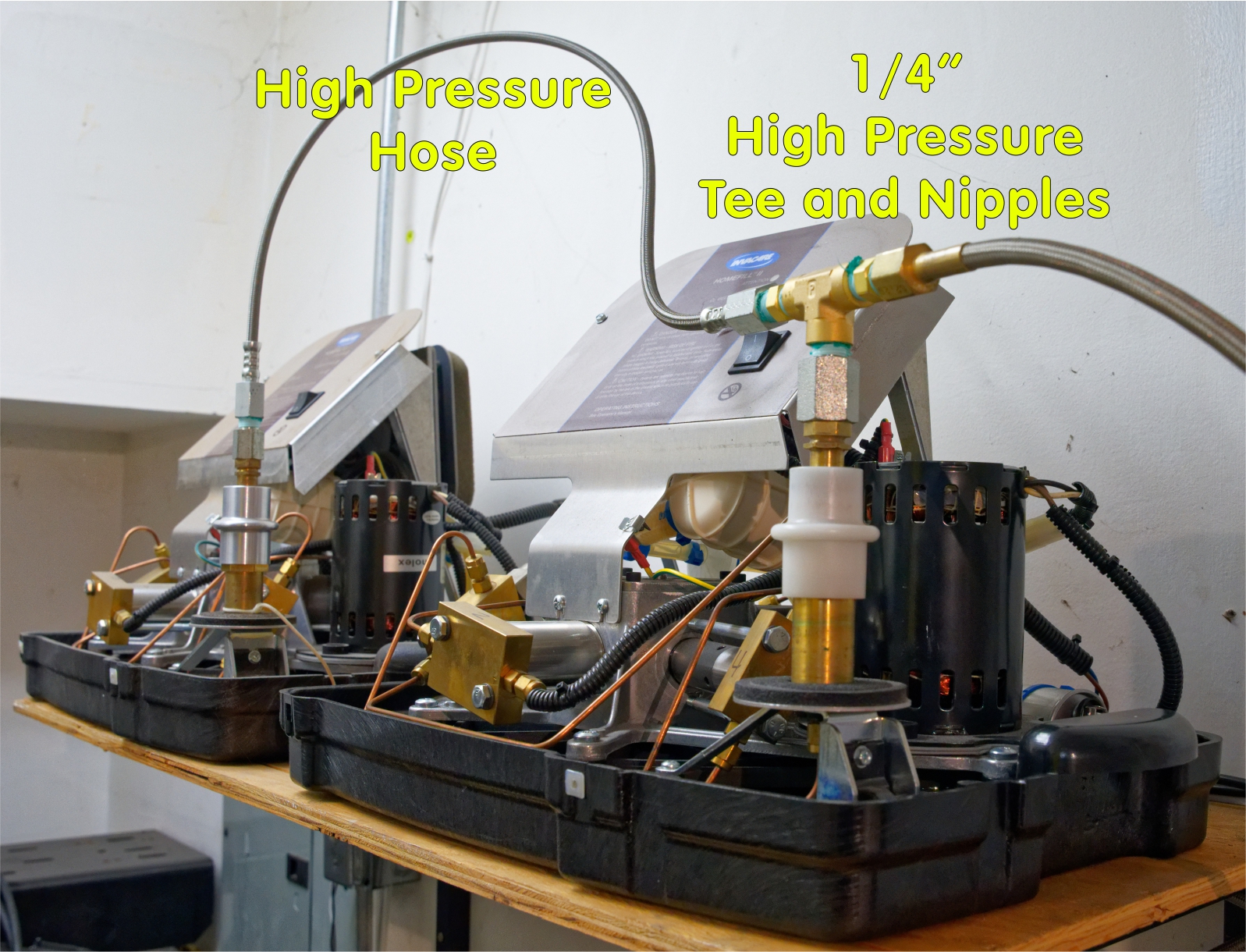
Two homefills connected in parallel with high pressure hoses and fittings
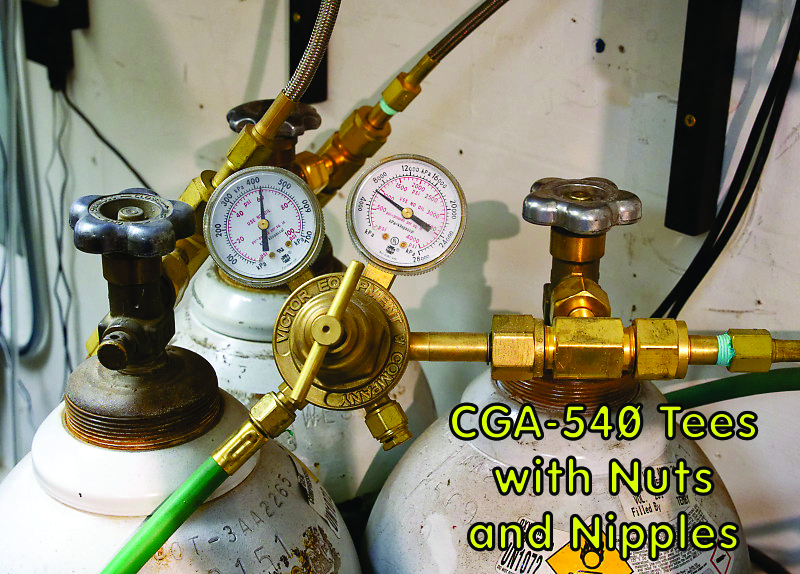
Three high pressure tanks connected in parallel with high pressure hoses and fittings
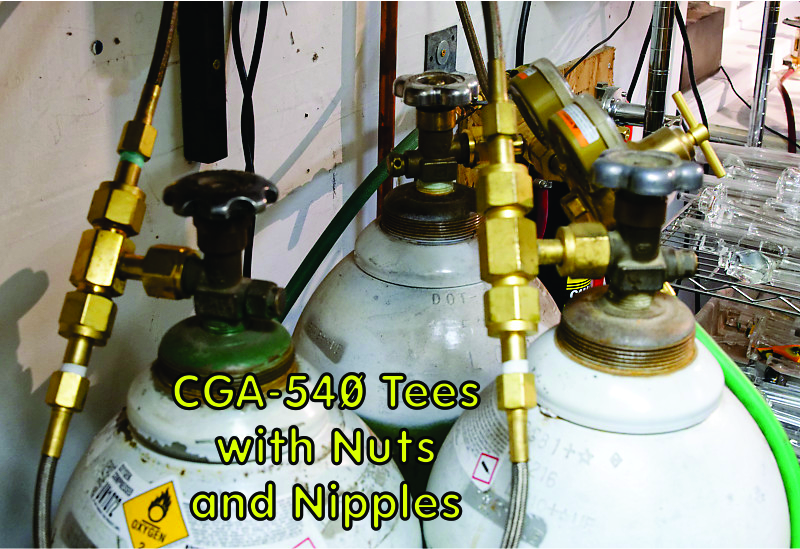
Another view
---- High pressure hose
Western Enterprises PF2-4-36 Stainless Steel Flexible Pigtail, 3,000 PSIG, 36", Both Female Connection
---- To connect K tanks to high pressure hose
Western Enterprises 62, CCGA-540 Oxygen Nut
Western Enterprises 63, CCGA-540 Oxygen Nipple
---- To connect K tanks and together
Western Enterprises T-62 Oxygen CGA-540 Tee Adaptor
---- To connect homefills together
Western Enterprises BFT-4HP 1/4" Female NPT 3000 PSI rated Tee
Western Enterprises N-4-20HP 1/4" 3000 PSI rated Nipple
---- Y connector with valves, homefill bleed valve
Western Enterprises 111 Valved "Y" Connections, 200 PSIG, Brass, RH, 9/16" - 18, B-Size
California Air Tools CAT-20015HP Ultra Quiet & Oil-Free 1.5 hp, 20 gallon 175 PSI Two Stage Air Compressor
ASCO 8262H265 120/60AC 2-Way Brass 1/4 In Solenoid Valve, Normally Open, General Service
